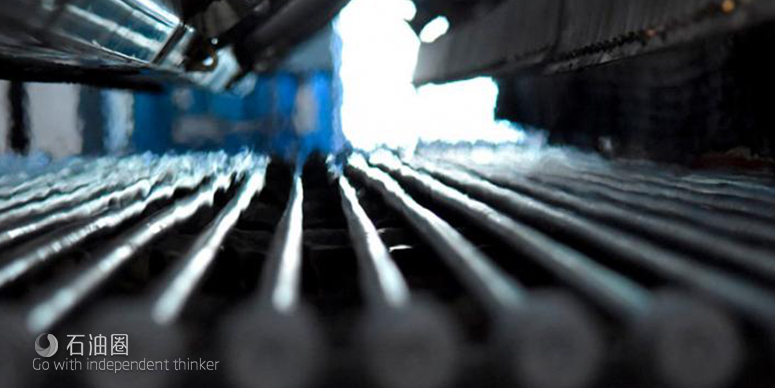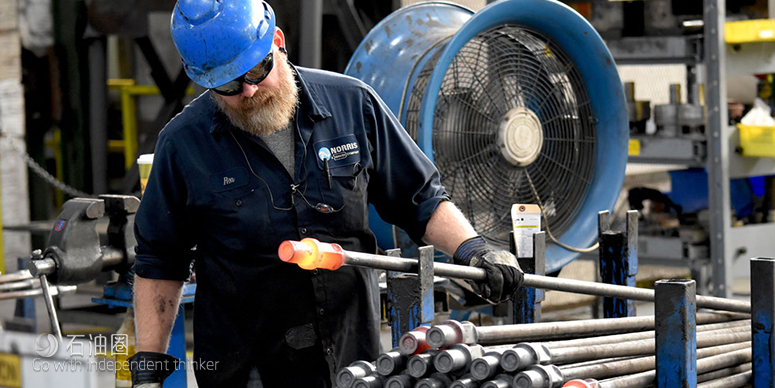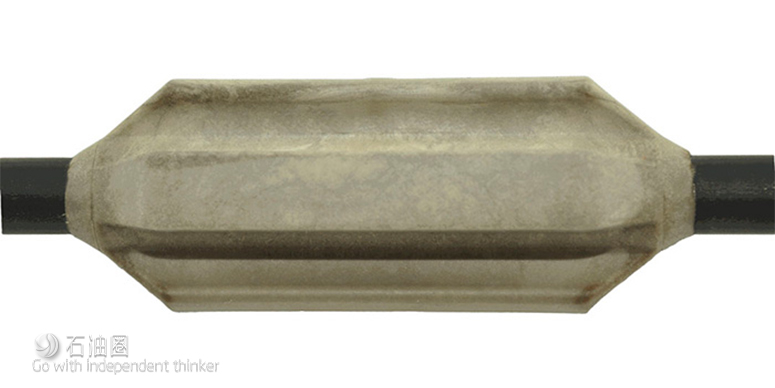The life of a sucker rod guide is not a glamorous one. Much like an official or offensive lineman in a football game, the sucker rod guide has successfully performed its job only if it goes unnoticed. That’s not to say, though, that sucker rod guides—like the referee or the left tackle—are not critical to the success of oil and gas production and recovery operations. In fact, sucker rod guides can be so important that they are referred to as “sacrificial components” by those in the oil and gas industry.
There is no question that sucker rod guides, which are placed on the sucker rod string to connect the surface beam unit to the downhole pump thousands of feet underground, will inevitably reach the end of their useful life. They will give that “life” by protecting the sucker rods from contacting and potentially damaging the well’s tubing.
Recently, some oil field operators—especially those in the shale plays of Eagle Ford (South Texas) and Bakken (North Dakota)—have begun to notice that traditional sucker rod guides that have performed well over decades are experiencing higher failure rates. This is particularly true in deeper wells that feature higher ambient temperatures than most traditional oil and gas wells.
With that in mind, attempts are being made to develop new sucker rod guide materials that will allow them to withstand the higher temperatures in deeper shale wells. One material is demonstrating favorable early results and is close to being brought to market.
The Challenge
The signs of the shale revolution in the U.S. are everywhere, from the country’s new position as the world’s leading producer of natural gas to the lower per-gallon price of gasoline that is seen on street corners nationwide. Shale has also changed the world of oil and gas exploration, production and recovery.
In addition to the horizontal hydraulic fracturing operations that are required to reach shale deposits, these deposits are much farther beneath the Earth’s surface than traditional oil and gas deposits. For example, the depth of a typical crude oil well can average between 5,000 and 7,500 feet (1,525 and 2,290 meters), while a traditional natural gas well is around 6,000 to 6,500 feet (1,830 to 1,985 meters) deep. By comparison, shale wells can reach depths between 8,000 and 12,000 feet (2,440 to 3,660 meters), and sometimes more.
Operators have discovered that at those depths, where temperatures can exceed 220 F (104 C), the service life of sucker rod guides can be adversely affected. The industry is widely using sucker rod guides that are constructed of a synthetic polyamide, which has high resistance to a broad range of chemicals and higher strength and stiffness at high temperatures than many plastics. This material is used in place of metal and other plastics when operating temperatures can reach heights of 400 F (204 C).
While this synthetic polyamide material is rated for use at 400 F, it is not rated for use at that temperature during continuous-service operations, which is what it encounters during oil production when wells operate on a 24/7/365 schedule. A sucker rod guide constructed of this material that is used continuously in temperatures that exceed 220 F—and when combined with the varying types and amounts of fines and solids it will encounter in the tubing—will wear faster than in a well with lower temperatures.
The average 30-foot sucker rod is outfitted with three sucker rod guides made of this synthetic polyamide. This translates to 200 sucker rod guides that would be required to operate effectively in the hot zone between 8,000 and 10,000 feet. This means there are 200 opportunities for a sucker rod guide to fail prematurely.
This excessive and quicker wearing of the sucker rod guide in high-temperature operating atmospheres can pose a number of problems for the oil and gas recovery operation. The most basic issue is that sucker rod guide failure can allow the sucker rods to come into contact with the well tubing, which can create holes in the tubing. Even worse, the sucker rod guide can wear to a point where it falls off the sucker rod. The pieces could end up in the pump, resulting in pump failure and costly removal for service. Another possible scenario is that the pieces can plug the flow line, stopping the upward movement of flow. Both situations would result in costly downtime and lost production.
All this being said, the synthetic polyamide sucker rod guides are, as they have been for many years, still perfectly acceptable for use in wells where excessive temperature conditions are not encountered.
The Solution
Around 2014, shale operators began to notice that their sucker rod guides were experiencing increased wear, which prompted the designers, manufacturers and suppliers of these critical downhole components to begin the search for a solution. The industry needed a sucker rod guide constructed of a material that could not only handle the higher operating temperatures, but also supply the long-life service that synthetic polyamide sucker rod guides had demonstrated.
The industry’s primary task was to create a new type of sucker rod guide with an extended life that could adequately keep the sucker rod off the tubing, even at elevated temperatures. After significant research and 12 to 18 months of field testing, one solution has been identified: a new model of sucker rod guide that is a molded plastic and features some amount of polyether ether ketone (PEEK). Note, though, that the new material is a PEEK blend and not 100 percent PEEK.
The new PEEK-blend sucker rod guide seems an ideal replacement for synthetic polyamide models in shale wells because PEEK is a thermoplastic that retains its mechanical and chemical-resistance properties even at high temperatures. In fact, PEEK melts at a very high temperature (650 F/343 C) when compared with most other thermoplastics. This has made it an ideal component in such industrial equipment as pumps, piston parts, bearings, compressor-plate valves and cable insulation.
When blended with other plastics, PEEK has shown that it can help the component perform reliably in operating temperatures as high as 480 F (249 C). This performance level perfectly hits the sweet spot for sucker rod guides that are tasked with continuous-duty in deep, high-temperature shale wells. The manufacturing process for the new PEEK-blend sucker rod guides is more demanding than for those constructed of synthetic polyamide. Also, more manufacturing controls must be met, and there is a higher cost for materials. These time and expense considerations are more than offset by an increase in performance, well uptime and service life.
Conclusion
There is no question that the oil and natural gas production industry in the U.S. has been significantly changed by the shale revolution. This has forced oil field operators to not only rethink where to locate and how to perform their exploration, drilling and recovery operations, but also what equipment innovations are necessary to optimize these operations.
While horizontal fracking has created a new niche in oil and gas production, a piece of equipment as humble as the sucker rod guide also has needed to be rethought for operators to realize the full potential of production and recovery systems.
With committed supplier partners who are in tune with the needs of their customers, the challenge of decreased sucker rod guide performance in high-temperature shale wells is about to be defeated with the introduction of the next generation of sucker rod guides to the market.

 石油圈
石油圈


